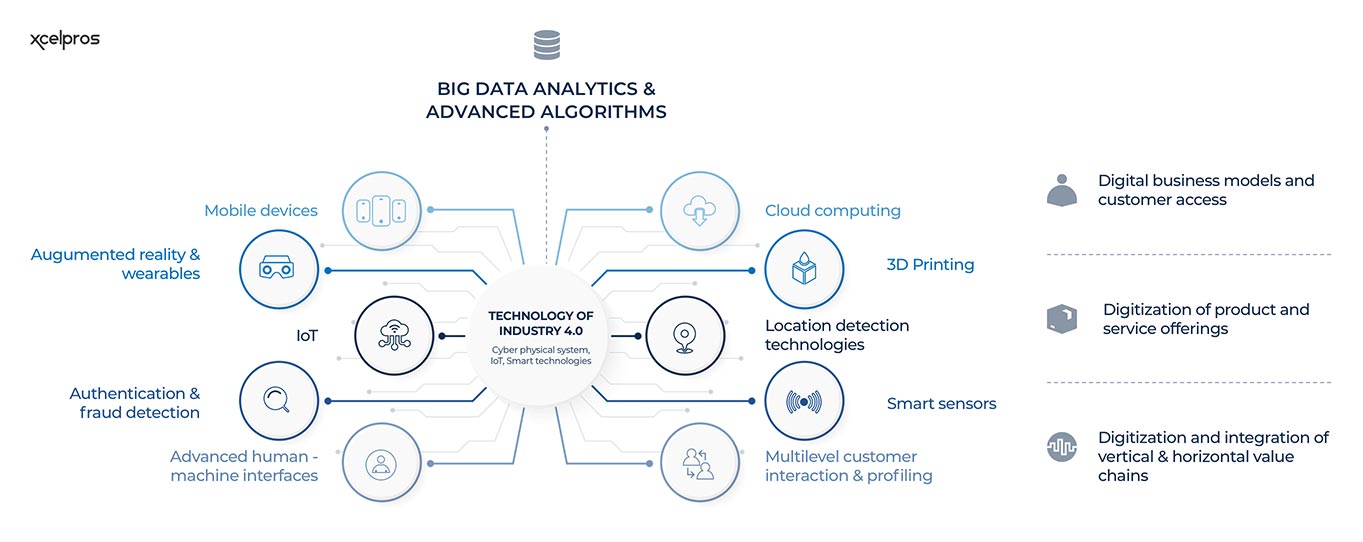Introduction
Biotech companies, like other highly regulated industries, must stay focused on their business to stay competitive and profitable, leading many to wonder if a solution like Microsoft Dynamics 365 can help. Microsoft’s latest offerings include several different cloud-based software applications that can help your business succeed, no matter what industry you operate in. From CRM software that helps keep your customers satisfied to accounting and invoicing software that can streamline your operations, Dynamics 365 can improve every aspect of your business.
Overview of Microsoft Dynamics 365
We talk about Microsoft often, and with good reason. The latest version of Dynamics 365 offers a comprehensive, integrated application suite that helps midsize and large enterprises of all industries and sizes operate more efficiently. Organizations that have leapt legacy software happily report increased efficiency, profitability, and customer satisfaction, especially over time.
Microsoft Dynamics 365 uses complex algorithms, data analytics, cloud storage, and processing power to provide users with real-time data across their entire operation. Built on Microsoft’s Cloud technologies, it is an extremely capable Enterprise Resource Planning (ERP) solution that includes modules for finance, HR, sales, and marketing, integrating seamlessly with different Office365 applications like SharePoint Online.
Key capabilities include time management for HR teams and a BI (Business Intelligence) feature for analyzing important insights about sales performance or key metrics like customer loyalty. With Microsoft Dynamics 365, leaders can see where they stand with goals and forecast future results. With this information, they can make informed decisions based on reality instead of fear.
As organizations in the life sciences move into uncharted territory with technology innovations happening at an accelerated pace, they need solutions to help them stay competitive. A more thorough list of features includes inventory management (for example, purchase orders), financial forecasting (budgeting), contract management (including contracts with suppliers) and payment terms, which make the system highly flexible for any size organization or environment, reducing the need to customize solutions based on old ideology.
Benefits & Advantages of Switching to Dynamics 365
After switching from legacy software to Microsoft Dynamics 365, organizations can expect increased agility and enhanced efficiency in operations. Biotech companies will be able to find success by speeding up innovation and giving themselves a competitive edge over their competitors.
With Microsoft Dynamics 365, they’ll have more insight into what customers want, which products are working well and why they’re not doing as well as they should. Organizations will also have access to data that would have been difficult or impossible to retrieve, like customer feedback about past product launches.
Armed with more information, companies can go back and improve those products to give them better chances of success. They’ll also be able to make more informed decisions based on accurate data, meaning everything will run smoother when it comes time to restock inventory.
Employees will get more personalized insights allowing them to develop creative solutions to problems on the fly without having to wait for IT staff. Plus, all employees have an easier time finding needed resources because of how closely tailored Microsoft Dynamics 365 is to their needs as employees of that organization.
Microsoft Dynamics in Biotech
Biotech companies are constantly challenged to maintain compliance standards, but there are features within Microsoft Dynamics that help with regulatory requirements and inventory control.
And with eForms, document management, and archiving solutions, you’ll have all your data captured in a central repository where you can use intelligent or custom search to find what you need when needed.
Figure 1:Microsoft Dynamics 365 for the Biotech Industry

Here are some more specific reasons for Microsoft Dynamics 365 in the Biotech industry.
- 1.Microsoft Dynamics 365 enables automation for several Biotech processes out of the box, which ensures you’ll spend as little time as possible getting up and running.
- a.AP automation
- b.Business Process Library (BPL) management for ISO certification
- c.Lot, batch and quality tracking
- 2.Dynamics 365 provides powerful insights through machine learning tools like Power BI that help measure customer engagement metrics, letting you plan and forecast more accurately.
- a.Expenses
- b.Budgets and forecasts
- c.Increased visibility for investors
- 3.Seamless integrations to the entire Microsoft 365 ecosystem and other third-party solutions give you greater visibility of everything under one roof for maximum long-term value.
- a.Banks
- b.Label and Lab software
- c.Payroll systems
- d.ACH
- 4.Powerful scalability means you can add additional functionality or users as your business grows.
- a.Subscription-based pricing helps you manage your technology budget
- b.Secure team collaboration from different devices around the world
- c.One solution is to invest in the long-term
Microsoft Dynamics offers more than just sales, finance, and operations functionality. So, suppose any part of your operation needs a software solution. In that case, it’s worth exploring how Microsoft Dynamics 365 could be leveraged to give you a competitive edge over others in your industry.
The Biotech industry is a perfect example with numerous variables such as complex research, high failure rates for drugs going into clinical trials, and fluctuating levels of competition. The technology tools businesses use in this sector include precision engineering and computer modeling, proprietary manufacturing methods and other specialized equipment.
One thing to consider with Microsoft Dynamics is that the company updates their products at least once a year, ensuring they’re always keeping up with the latest trends in technology. For example, annual releases include updates across the entire product portfolio. Each solution can provide better support for real-time decisions based on emerging technologies such as Ai (Artificial Intelligence), IoT (Internet of Things), and analytics.
Technology that Supports Your Workflows
Microsoft Dynamics 365 is a complete suite of technologies designed to streamline workflows and get more done in less time. The complete suite is designed with the people and processes that power your business in mind. Microsoft Dynamics 365 incorporates three main categories – customer engagement, employee engagement, and intelligence capabilities – to help all your employees work better together by offering a cloud-based app that functions on any device so that you always have access to information.
Microsoft Dynamics 365 also includes all necessary functionalities such as finance and accounting, manufacturing, retail management, enterprise resource planning, customer relationship management and marketing tools to be flexible enough to adapt to any size or type of business.
These tools are designed to save you time while improving your decision-making abilities. Additional benefits include easy deployment and customization options tailored specifically to meet your company’s needs and greater security due to its compliance with data protection regulations like HIPAA, GDPR and PCI DSS standards.
Factors That Can Affect Your Migration
Key factors that can affect your migration to Microsoft Dynamics 365 usually include financial considerations, customer-facing tools, and Industry-specific modules. Considering these factors is essential when looking at the different migration paths and key decisions, such as starting from scratch or migrating everything from your existing system.
These decisions should be made with a strong understanding of Microsoft Dynamics 365 functionality and features. As mentioned previously, it’s important to research the best path for your organization before beginning any work on migrating data into Dynamics 365.
One major consideration is working with a Microsoft Partner specializing in either Data Migration Services or Application Integration Services, who’s worked with both systems. The right Partner will work with you through the process and help ensure it goes smoothly and efficiently.
It may take longer initially if you want all your data transferred. Still, this way, you won’t have any gaps in information once everything has been moved over, which could lead to a smoother transition overall while also avoiding potential errors due to duplicate records or inaccurate information.
Critical Aspects when Migrating to a New Platform
Below are five critical aspects to remember when migrating your business to any new platform.
- 1.Think about how long it will take you to make the migration before you start. Migrations that take weeks or months can consume your budget and cost you valuable time.
- 2.Ensure all stakeholders agree on what they want to achieve through a migration before your project starts.
- 3.Evaluate whether it’s feasible to do an incremental migration rather than a full one-time conversion from the legacy system to Dynamics 365 (keep in mind incremental migrations have their own set of issues and problems).
- 4.Consider migrating other aspects of your business, along with data – Integrating Dynamics 365 with your partners and vendors, for example, can help streamline day-to-day business functions.
- 5.Focus on understanding who uses which features and how they use them.
Understanding your needs ahead of time will help optimize your experience in the future. You’ll also want to set up a post-migration process where feedback channels are open at every step of the way, so that any challenges experienced by staff during the migration can be resolved quickly without disrupting business operations.
Final Thoughts
Whether you’re an aspiring startup or an established Biotech company with a growing number of employees, Dynamics 365 continues to offer many powerful features that let you offer a better customer experience and help you keep things running smoothly.
Here are the next steps if you’re ready to get started updating your Biotech business solution to Microsoft Dynamics 365:
- Find a Partner that understands the software, your industry, and the work you do.
- Consider your company’s specific needs and goals to ensure the proposed solution meets these criteria.
- Assess the current state of any legacy software in use, including the time it takes to manage payroll with old systems.
- Identify what functionality is already included in the system and set clear priorities for needs and wants.
Schedule a call right away for additional details or to learn how we can support the expansion of your Biotech company.


















